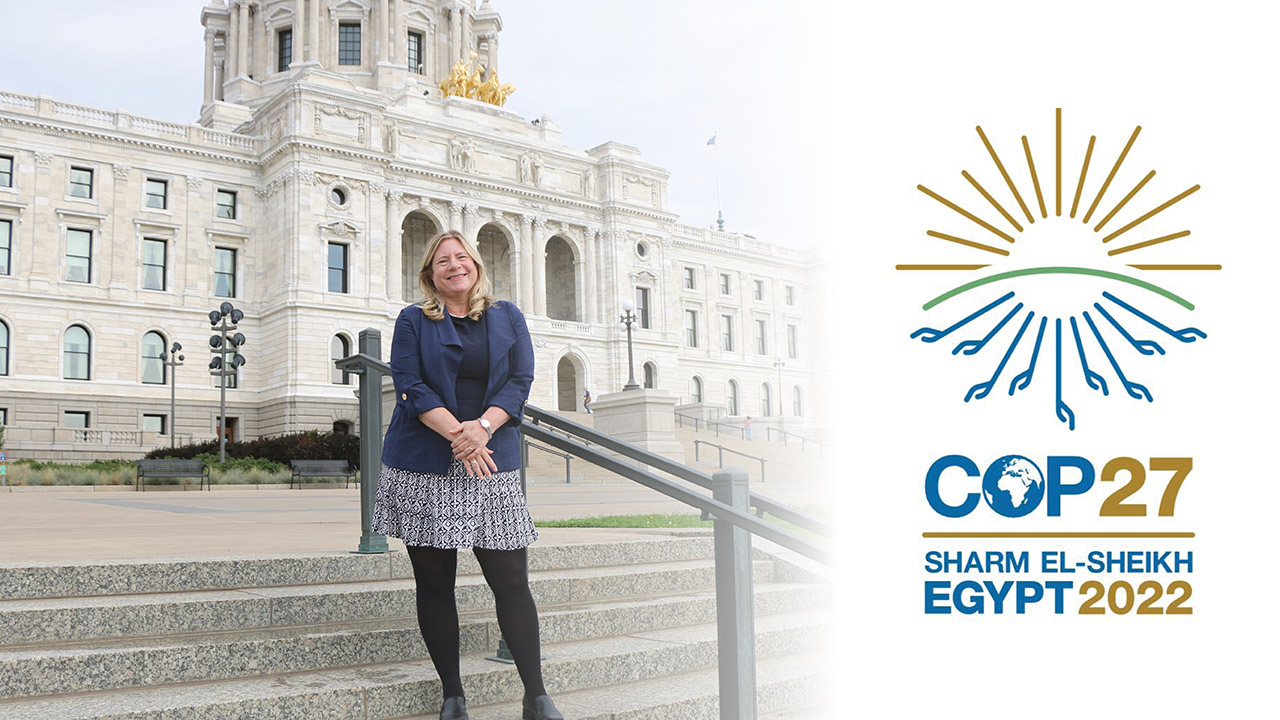
Fresh Energy is known for its climate and clean energy advocacy across Minnesota and throughout the Midwest. But what many friends of Fresh Energy might not know is that, thanks to Senior Director of Science Policy J. Drake Hamilton, Fresh Energy gets to carry that climate and clean energy advocacy to the global stage, advocating on behalf of Minnesotans, Midwesterners, and more at the United Nations (U.N.) Climate Change Conference every year.
J. has attended the U.N.’s global climate change convening for the past six years, from 2005 through 2021—and she’s continuing the tradition this year. Last year, that landed her in Glasgow, Scotland, for COP26, negotiating key climate and clean energy ambitions in support of The Climate Registry and America Is All In, the most expansive coalition to champion whole-of-society mobilization to meet the challenge of the climate crisis and secure a healthy, prosperous, equitable, and sustainable future for everybody.
“Climate change can only be solved if people across the world work together,” says J. “I’m looking forward to working with so many partners, supporters, and friends of Fresh Energy on the global stage in Egypt this November to get this work done and identify collective needs and solutions to the climate crises that are already affecting many countries.”
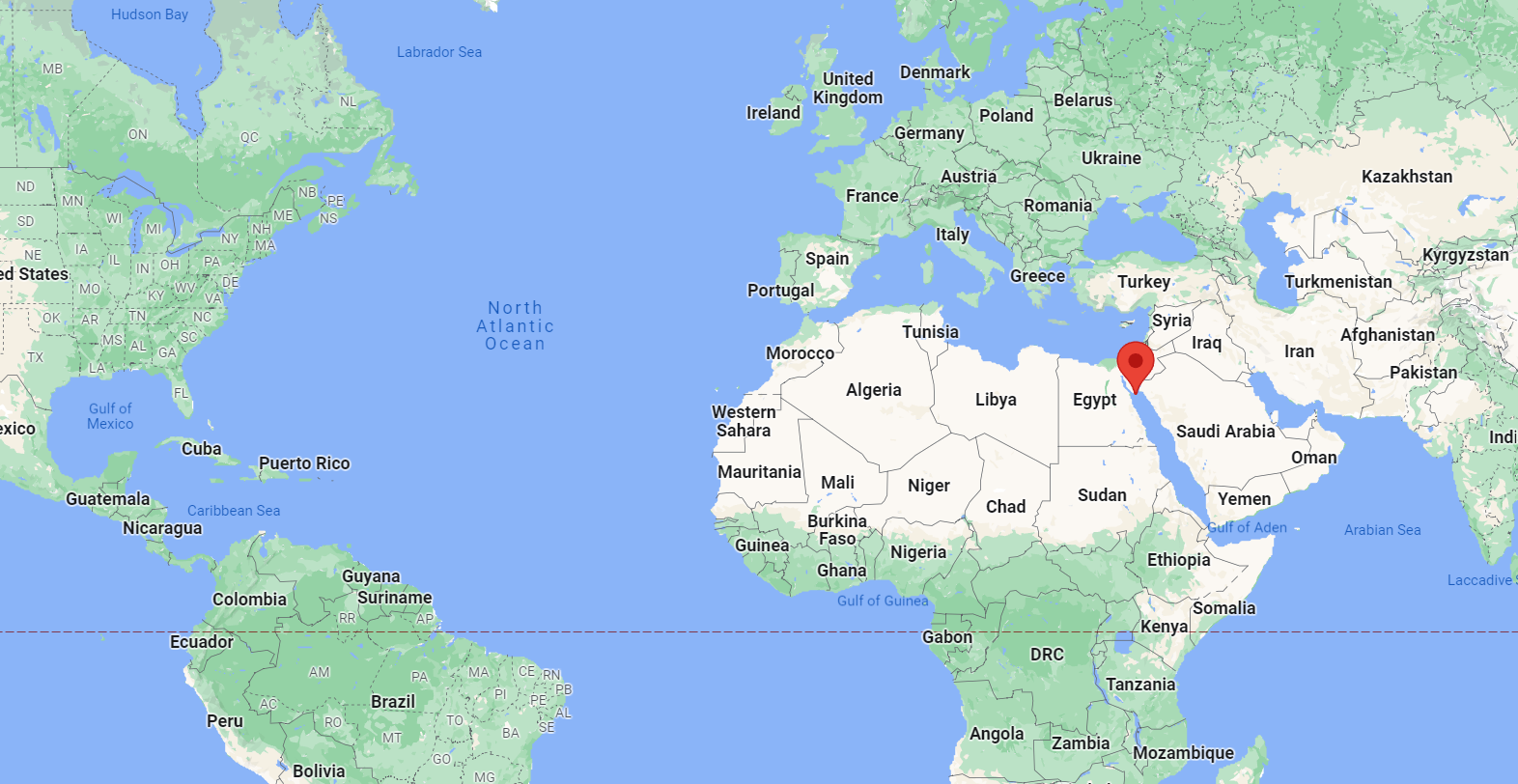
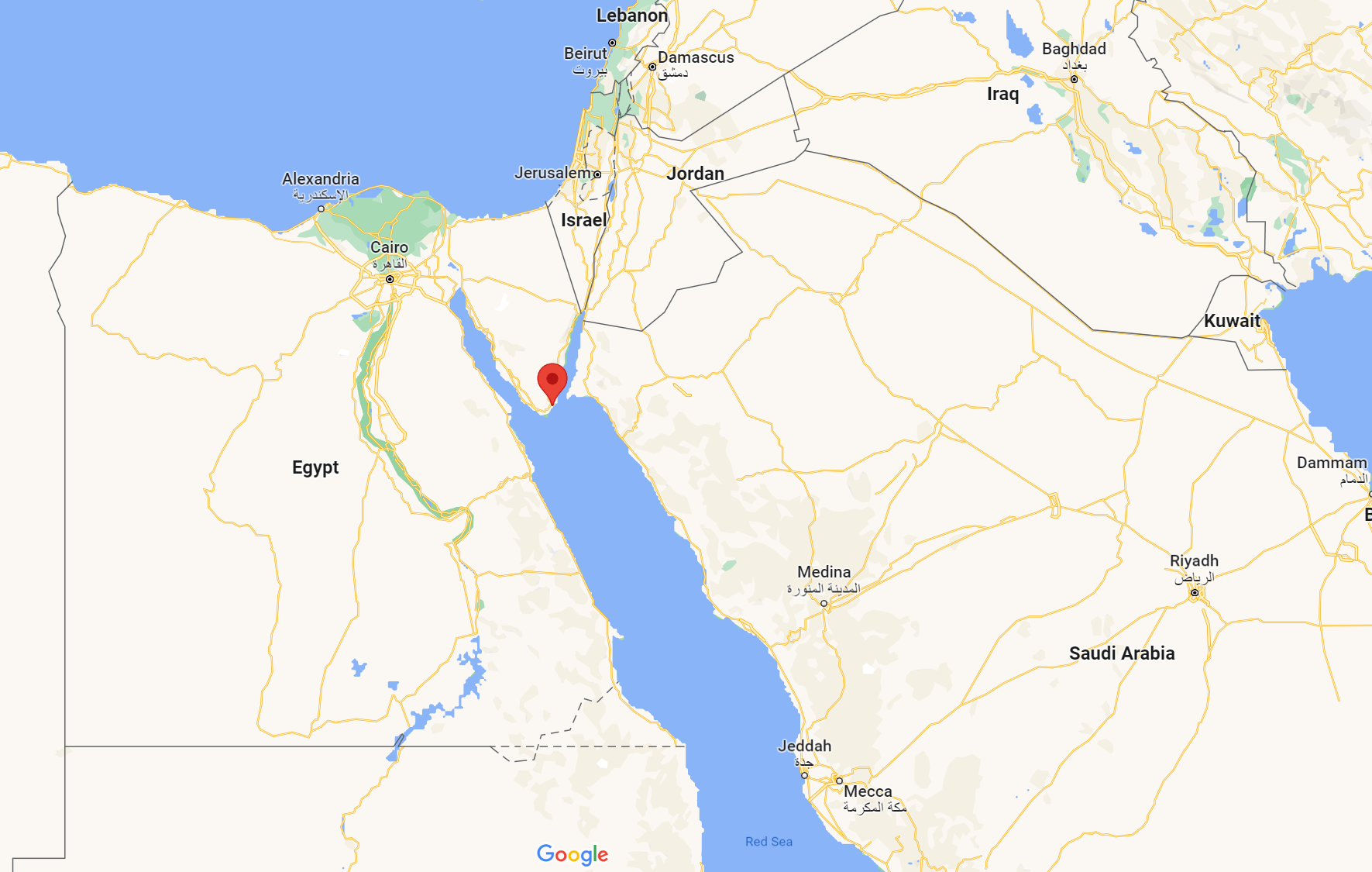
This year, the Climate Change Conference, better known as COP27, will be held in Sharm El-Sheikh, Egypt—located on the western coast of the Red Sea, situated on Egypt’s Sinai Peninsula—from November 6 to November 18. Sharm El-Sheikh is approximately a five hour drive, or one hour flight, from Egypt’s sprawling capital city, Cairo, which sits on the banks of the Nile River.
And J. is headed to COP27 with a special priority: climate finance. What is climate finance, and how is J. involved? Let’s break it down.
What is climate finance?
The U.N.’s approach to categorizing different topics it aims to address can result in big words that aren’t always self-explanatory. Fortunately, in this case, we’ve got some simpler words to work with! When it comes to climate finance, the U.N. is referring to local, national, and especially between-nations financing that is drawn from both public and private sources. These climate funds from governments, multilateral development banks, finance from the private sector, and more are intended to support two other critical U.N. priorities: mitigation and adaptation.
Climate change mitigation refers to efforts to reduce or prevent greenhouse gas (GHG) emissions. This can happen via a variety of methods, such as installing new clean energy technologies as well as bedrock solutions like wind farms or solar panels to reduce fossil fuel use, improving older equipment to make it more efficient, or changing management practices and consumer behaviors. It’s worth noting that, in 2009 at COP in Copenhagen, the world’s richest nations agreed to mobilize $100 billion USD per year beginning in 2020 to help pay for mitigation work. That promise has not yet been met. At COP26 in Glasgow last fall, all participating nations noted that the unmet promise must be successfully addressed this year at COP27.
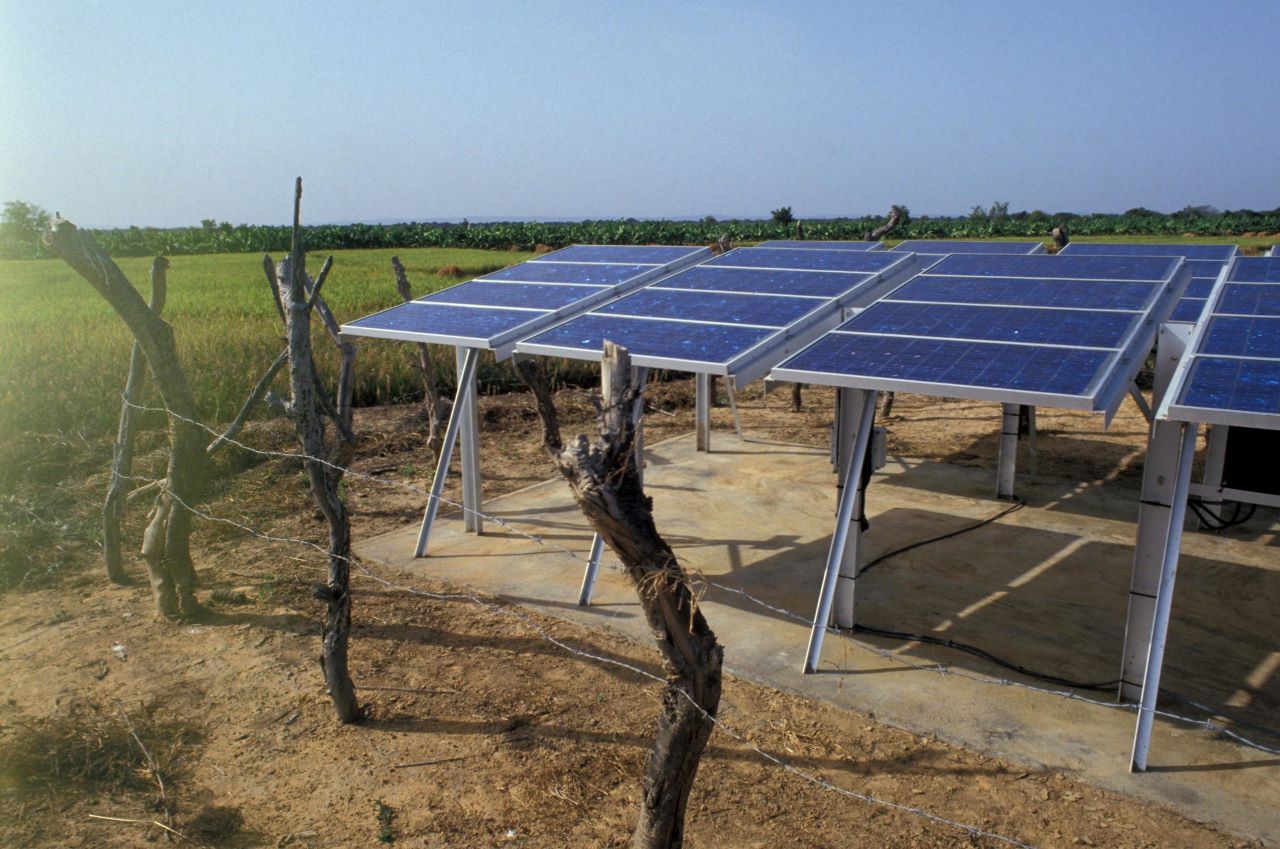
Similarly, climate change adaptation is the process of strengthening the global response to climate change by increasing the ability of all to adapt to our changing world, build resilience to climate change induced changes in local, regional, and national environments, and reduce vulnerability of the communities and areas most likely to be affected by climate change. This could look like strengthening flood defenses or providing sunlight-reflecting cool roofs for households.
Given the pace and the scale at which climate change is affecting people and communities across the world, it’s clear that this finance to power mitigation and adaptation will need to take place on a global scale. Economies and societies will need to amp up large-scale efforts, and many of these efforts will be initiated or managed by governments, for instance by building or adapting roads and bridges to withstand higher temperatures and more powerful storms, or supporting coastal cities as they create and implement systems that prevent flooding in streets and underground transportation networks.
Financial justice that makes global communities safer
Does it seem like these efforts have a big price tag? That’s because they do. But the reality is that protecting people now saves more lives and reduces risks moving forward. And it makes financial sense too. The longer we wait, the greater the costs will grow to implement changes and support communities impacted by climate change.
The U.N. itself has run the numbers—according to their research, making a $1.8 trillion global investment now in early warning systems, climate-resilient infrastructure, improved agriculture, coastal protection initiatives, and resilient water resources could actually generate $7.1 trillion through a combination of avoided costs and a variety of social and environmental benefits, like the growth of family-sustaining clean energy jobs, increased positive health outcomes, and greater global agricultural yields—a critical part of sustaining the world’s food sources.
While it might seem like the case for climate mitigation and adaptation is clear, some communities most vulnerable to climate change are the least able to mount a response, often struggling to come up with enough financial resources to cover basic needs like food stability, health care, and education. Global bodies like the Intergovernmental Panel on Climate Change (IPCC)—which reports on the state and scale of climate change across the world—have identified that this dynamic is, in large part, due to decades of historical and ongoing colonialism that has led to overrun natural environments, natural resource depletion, and increasing GHG emissions in places not primed to reverse those effects.
This reality is especially stark considering that COP27 is taking place on the African continent—a continent already experiencing some of the worst impacts of climate change it played very little if any role in causing. And parties who attend COP each year are well aware of this. In fact, last year’s COP—COP26 held in Glasgow—ended with a historic commitment by richer nations to provide what the U.N. refers to as “low- and middle-income countries,” or LMICs, with $40 billion USD annually in adaptation finance beginning in 2025. These are critical funds that will be used to help communities protect themselves against things like loss of life and destruction of homes and farmland. But, as it currently stands, that commitment must yet result in clear action.
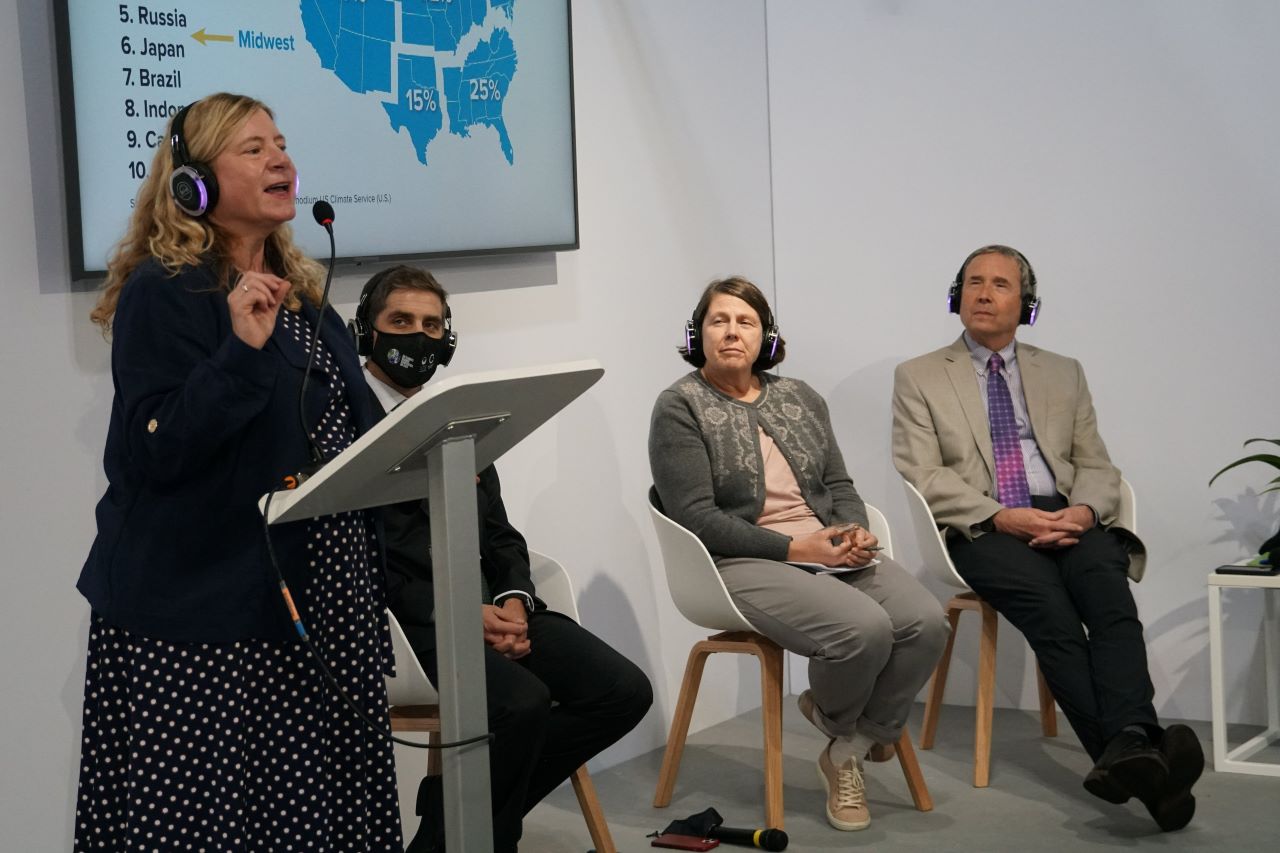
In J.’s eyes, it’s crucial we keep up the momentum with these financial commitments and resulting solutions, and she’s ready to get to work to ensure Fresh Energy uses its connections with partners, supporters, and climate activists and leaders across the world to continue driving climate and clean energy progress.
“Right now, global climate pledges to LMICs for mitigation and adaptation are sitting at a projected total of $21.8 billion annually—just over half of the $40 billion 2025 target,” said J. She adds, “That means it is absolutely critical that governments, private sector financiers, and everyone in between attending COP27 is aligned in global solidarity to face the challenge of climate change with the funding that vulnerable countries and communities need.”
Want to hear more about what J. is expecting and preparing for at this year’s COP? J. will be sitting down to talk about her objectives and priorities for this year’s Climate Change Conference on an episode of Fresh Energy’s podcast, Decarbonize: The Clean Energy Podcast, airing soon!
Following Fresh Energy tradition, J. will also be holding a post-COP27 webinar when she returns to Minnesota toward the end of November to give all friends of Fresh Energy the low-down on her experience in Sharm El-Sheikh, answer questions, and give us the inside scoop into how we can be engaged in this global climate advocacy and solutions process going forward.
Stream our recent episode of Decarbonize: The Clean Energy Podcast on is topic with J. and keep an eye on this page for live updates from J. on the ground in Egypt starting early November!
